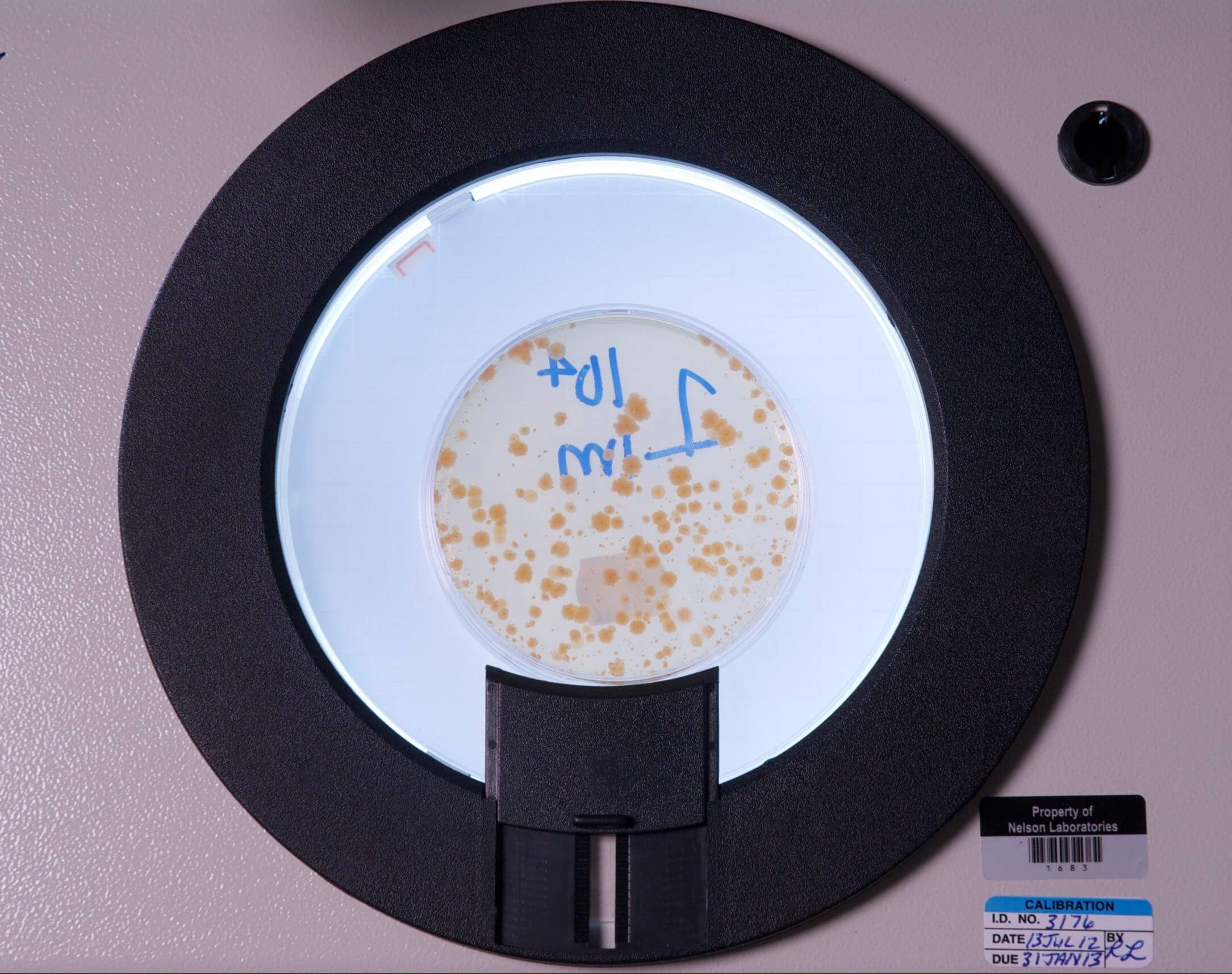Study Outline
Ames Mutagenicity
The Ames Mutagenicity test employs several strains of Salmonella typhimurium which have been selected based on their sensitivity to mutation because of:
- An increased cell wall permeability due to a mutation which causes partial loss of the lipopolysaccharide barrier that coats the bacterial surface, resulting in increased permeability to large molecules (rfa mutation)
- A mutation in the bacterial cell system which excises and repairs defects in the DNA, resulting in the inability to repair damaged or mutated sections (uvrB mutation)
- R-factor plasmids (some strains) and a multicopy plasmid (some strains) which contain error-prone DNA repair systems
The tester strains also require histidine for growth, due to a mutation in the gene which controls production of histidine.
The Ames tests are performed by mixing an extract of the test article with the test organism in a soft agar solution, which contains only small amounts of histidine. The histidine permits the inoculated test organism to undergo a limited number of divisions, but is insufficient to permit normal growth.
If, however, the strain undergoes a reverse mutation (spontaneous or induced by the test substance or a positive control material), the organism no longer requires histidine to grow and can produce a visible colony or revertant. Only mutations to the test organism in the region of the histidine gene will cause the test organism to undergo a reverse mutation to an organism, which then no longer requires histidine.
Tester strains are selected to detect various types of mutagens. The tester strains employed are TA97A, TA98, TA100, TA102, and TA1535.
A spot test is also performed in which the extracts of the test article are spotted on a plate containing the test organism with a small amount of histidine. As the test substance diffuses through the agar, it becomes more dilute. This allows for detection of mutagens which cause some inhibition of the tester strains. The tests are performed both with and without S-9 activation. The S-9 activation system is designed to simulate mammalian liver enzyme systems and is used to detect substances which undergo metabolic activation from nonmutagenic forms.
Chromosomal Aberration
The Chromosomal Aberration assay is performed by exposing CHO cells to the test article extract. A blank of extraction media is included in the assay as the negative control.
CHO cells are seeded into 75 cm2 cell culture flasks and incubated with cell culture media + 10% serum until 40 – 60% confluent.
The CHO cells are exposed to the test article extract in the presence and absence of a metabolic activation system. The metabolic activation system is a mixture of S9 homogenate, isocitrate, and NADP. The positive controls used are Cyclophosphamide with metabolic activation and Mitomycin C without metabolic activation.
Prior to cell harvest, the cells are examined for cytotoxicity. The flasks are scored as to the degree of discernable morphological cytotoxicity on a relative scale of 0 – 4 in accordance with AAMI/ANSI/ISO 10993-5 and USP <87>. The results from the three flasks are averaged to give a final cytotoxicity score.
At the end of the exposure and expression periods, the cells are arrested in metaphase with colcemid. The cells are then removed from the flasks and treated with a hypotonic solution and fixative. The cells are dropped onto microscope slides. The chromosomes are stained with Giemsa stain and coverslipped with Permount®. The cells are then examined microscopically for chromosomal aberrations.
Mouse Lymphoma
In the Biocompatibility Genotoxicity test, mouse lymphoma cells are used to determine whether a test material has the capacity to induce either point mutations or clastogenic (chromosomal breakage) events in a cultured mammalian cell line. In this case, the target gene, thymidine kinase (TK), is a dispensable gene. Loss of TK activity indicates a mutation has occurred. Because TK is involved in a salvage pathway for thymidine derived from DNA metabolism, the cells can synthesize thymidine de novo. Therefore, the loss of the TK does not render the cell nonviable.
Mutants can be selected and mutant frequencies derived by including a thymidine analog (trifluorothymidine or TFT) in the culture medium of cells after exposure to the test material. Normal cells with intact TK incorporate the analog and die; mutant cells (which lack TK activity) survive, form colonies, and are quantified.
Mouse Micronucleus
In the Mouse Micronucleus test, a medical device is extracted in a polar and nonpolar media. The test article extract positive controls and negative controls are administered at 20 mL/kg in both male and female mice. Bone marrow is then harvested at 24 and 48 hours after dosing and examined for the presence of micronucleated polychromatic erythrocytes (PCEs). The presence of PCEs is an indication of mutagenic substance leached off of the device.
Testing Locations
To learn more about our locations and their certifications, click here.
Contact Us
If you have additional questions about Ames Test and Genotoxicity Testing, or would like to consult with the experts at Nelson Labs, just send us a request or call us at +1 (801) 290-7500.



